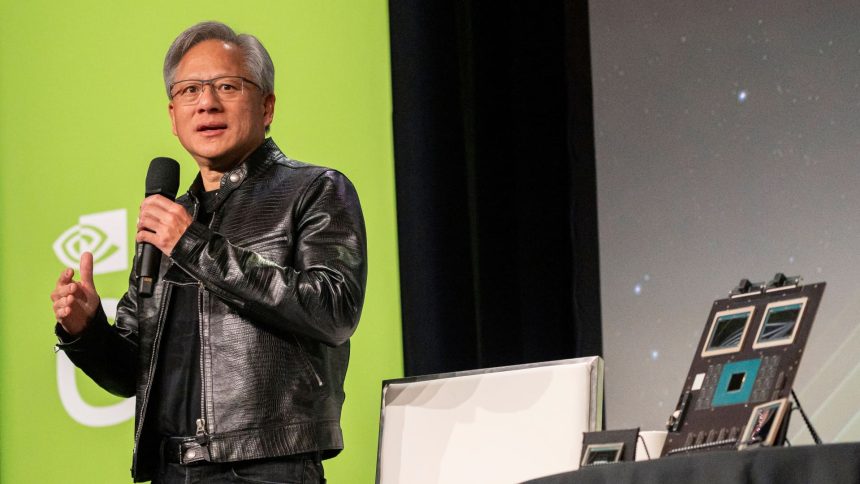CNBC’s Jim Cramer said Wednesday that Nvidia ‘s recent rough patch does not alter his long-term optimism on the leading artificial intelligence chipmaker. “I’ve been saying ever since the quarter, you’ve got it let it come down. Don’t be a hero in this,” Cramer said on “Squawk on the Street” before the opening bell. Cramer’s Charitable Trust, the portfolio used by the CNBC Investing Club, has owned Nvidia stock since 2019 — well before the generative AI spending boom turned the company into one of the world’s most valuable and influential firms. NVDA YTD mountain Nvidia’s year-to-date stock performance. Shares of Nvidia are down roughly 15% since its earnings report after the close Aug. 28 failed to meet investors’ sky-high expectations. That includes a 9.5% plunge in Tuesday’s session, which erased nearly $300 billion in market capitalization. The decline represented the stock’s worst day since March 2020 when Covid-19 fears rattled Wall Street. Shares have been volatile in regular trading Wednesday, oscillating between modest gains and losses. The stock remained up roughly 120% year to date. A confluence of factors is weighing on Nvidia this week. AI questions Tuesday’s steep slide is largely being attributed to Wall Street research that questioned whether generative AI will be as transformative as its proponents argue, which has helped justify billions of dollars of investments into the nascent technology since ChatGPT launched in late 2022. The author of one of those pieces was Michael Cembalest, an influential figure in the investment community who currently serves as chairman of market and investment strategy for JPMorgan Asset Management. “Michael is terrific, but these [AI-linked chip stocks] are going down because there are real thinkers, big thinkers, who read Michael Cembalest, and they just changed their mind. One of the few people who makes you change your mind,” Cramer said. In addition to concerns about return on AI investment, Cembalest also argued that “competition is coming” to try stealing share from Nvidia in the AI chip market, which some estimates put above 90%. Cramer, however, downplayed the competitive threat to Nvidia from the likes of Advanced Micro Devices , which the Club also owns, and Intel . He said that even though AMD’s new AI chip, known as the MI300X, is selling well , Nvidia maintains a significant technological advantage in designing processors and other key parts of the data center needed for AI computing. “Intel, let’s just take them off the table,” he said. DOJ subpoenas The other question mark over Nvidia this week is a Bloomberg News report that said the Department of Justice sent subpoenas to the chipmaker and other tech companies as part of its intensifying antitrust probe. The DOJ is investigating whether Nvidia has used anticompetitive practices to build its dominant market position, including whether it penalizes companies that don’t exclusively buy its chips, Bloomberg reported late Tuesday, citing unnamed people familiar with the matter. A formal complaint has so far not been filed against Nvidia. Sending subpoenas is part of an investigation is routine, Cramer said, while also taking issue with the reported substance of the Justice Department’s concerns. “You’re trying to allocate everything because everything is in short supply,” he said, referencing the supply crunches Nvidia has faced for its top-end AI chips due to fervent demand. “Are you supposed to give the customers who have not put in big orders the next round? Are they supposed to say, ‘We’ve got to sabotage our business because of the Justice Department?'” Nvidia’s lead on AI chips is because of the quality of its products, Cramer contended, rather than the use of predatory or below-cost pricing designed to squeeze out would-be rivals. The Justice Department needs to ask, “Why didn’t Intel do great AI chips?” Cramer said. “It was not because this company Nvidia is a monopolist in behavior. Google, they claimed, was a monopolist in behavior, and they won in court [last month] . This is a much tougher case.”
Read the full article here




